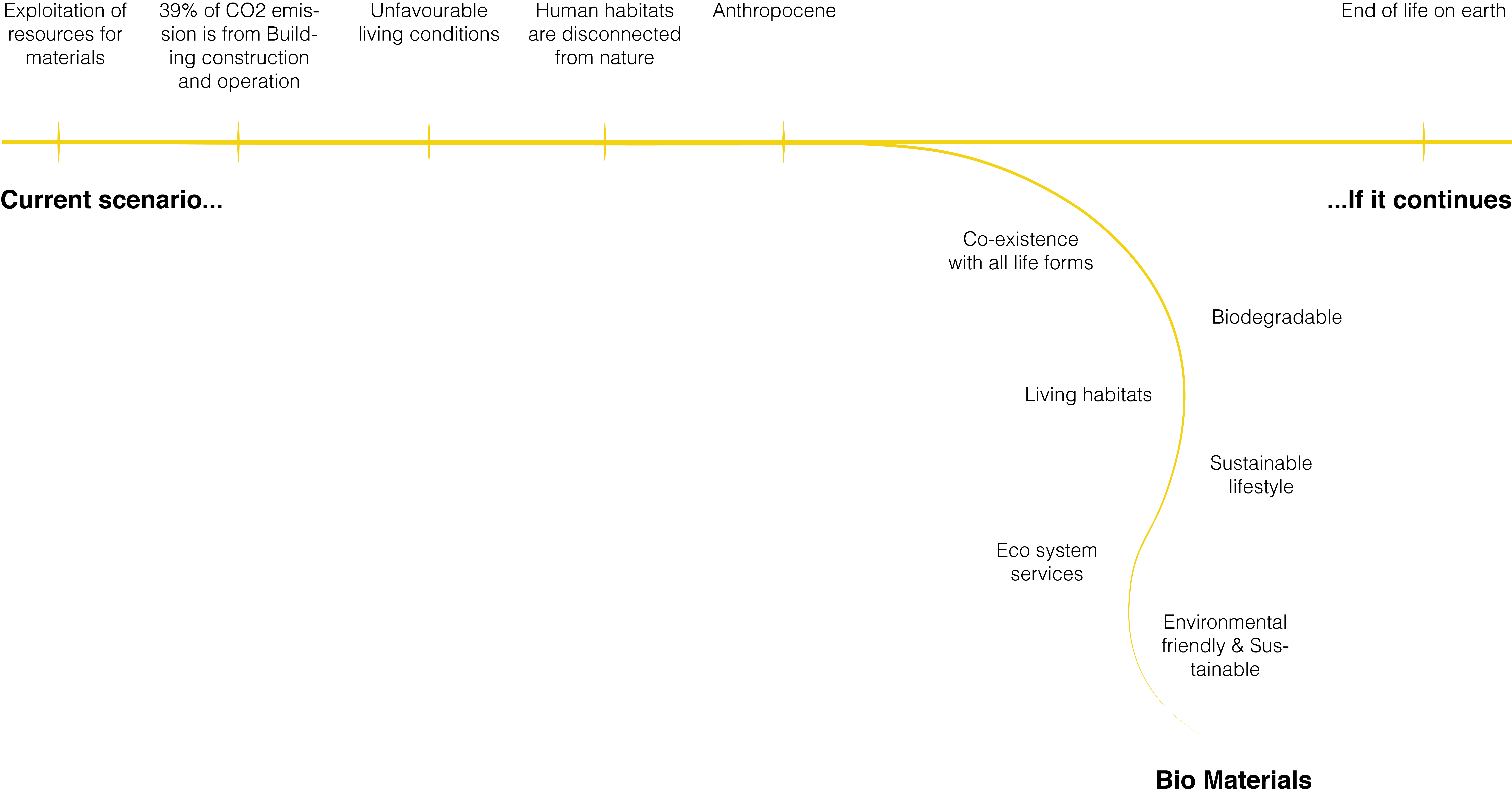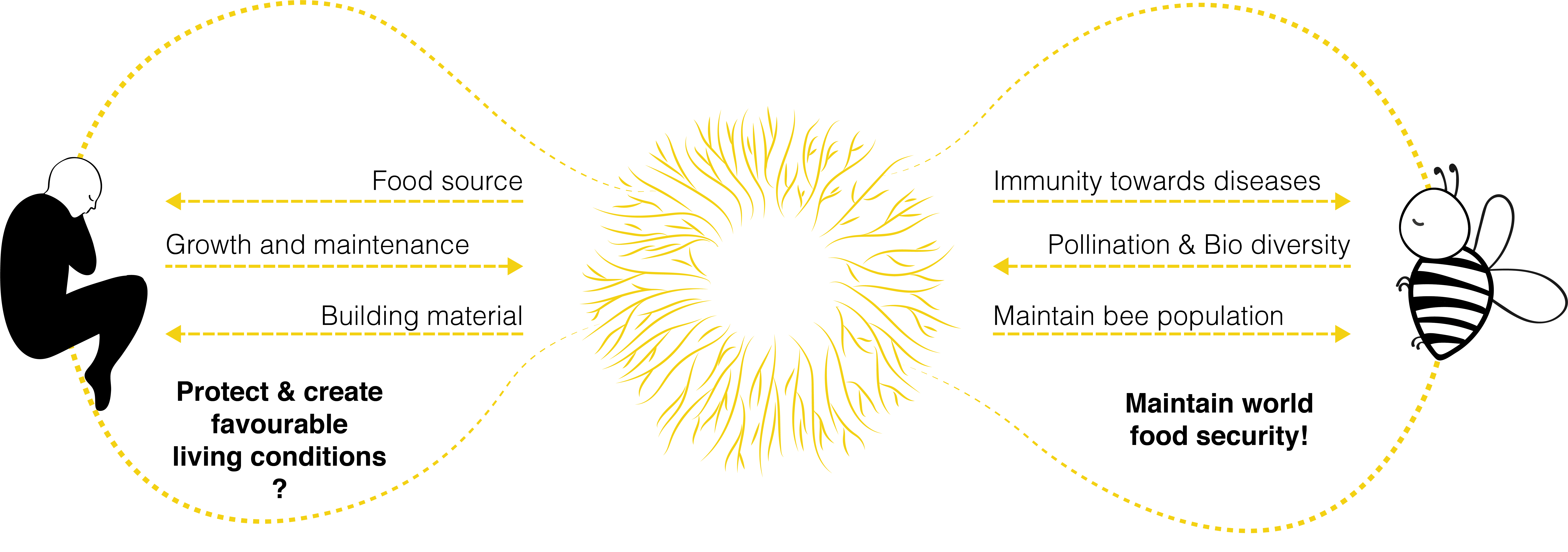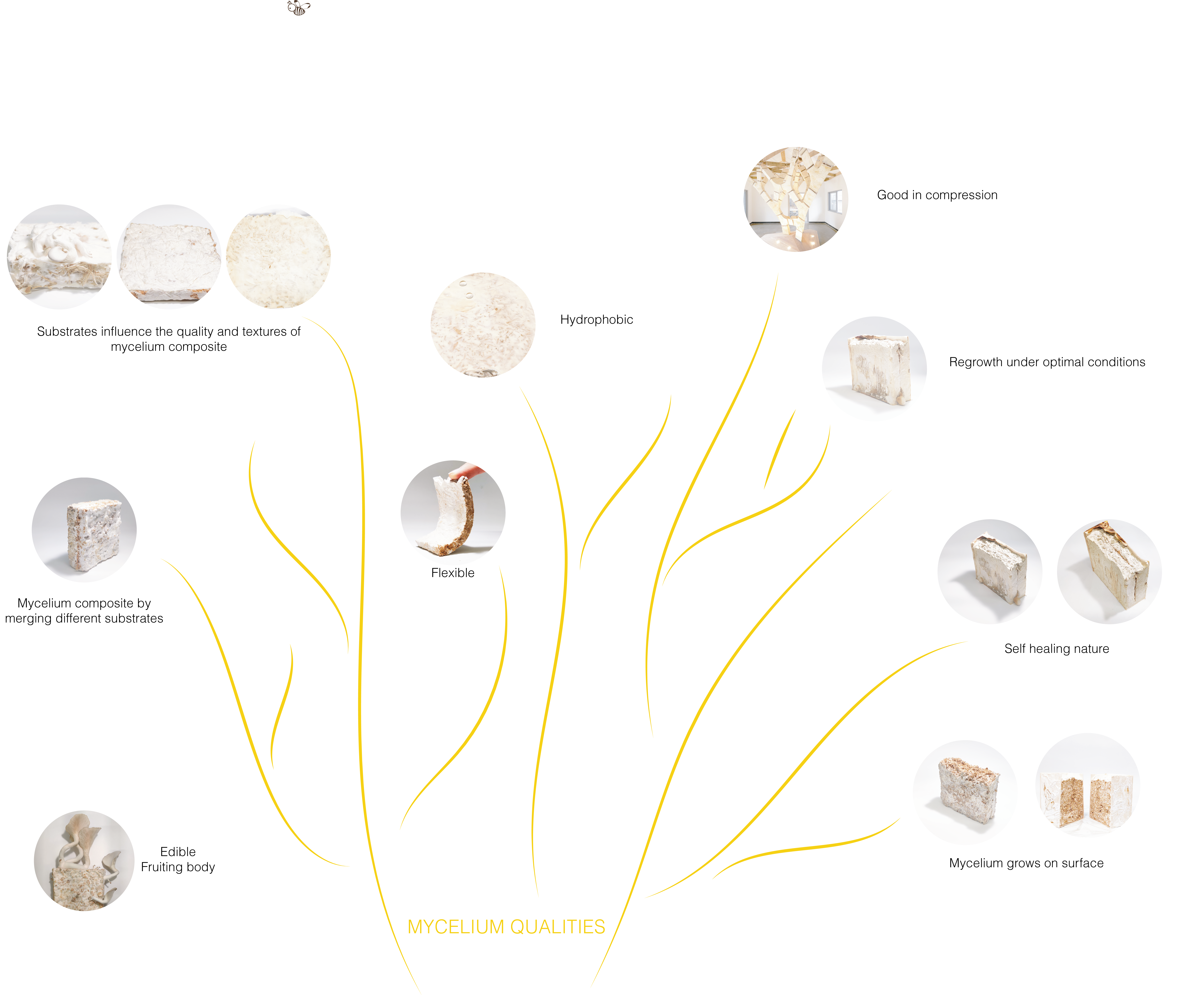
The use of bio-based materials possibly enhances the symbiotic relationship among species to promote both environmentally friendly and sustainable innovation.
Nature exhibits the symbol of coexistence by mutual dependency on each other. Several species live in symbiosis contributing to vital ecosystem services to provide and receive benefits from each other.
Food is essential for the survival of all life forms on earth. Pollinators plays a significant role to regulate and maintain the diversity of food crops. About one third of the food we consume across the world depends on pollination of insects, of which bees account for about 80 percent of pollination worldwide. Humans have been responsible for the loss of habitats and population decline for several species including bees.
As we directly depend on bees to maintain the global food security both through effective pollination and production of honey in case of honey bees, it becomes our soul responsibility to alleviate the damage in order to receive a mutual benefit from each other and also enrich the ecosystem values. This interdependency would possibly reduce the hierarchy and rather create a more balanced and inclusive space for all.

This strong dependency of both humans and bees on mushroom mycelium opens scope for investigating opportunities for mycelium structures as an integral part to establish a mutual symbiosis in creating a habitable space for both species to live in synergy.

Mycelium is the vegetative part of the mushroom that is made of long, branching white filamentous mass called hyphae. The hyphae are made of chitin, a structural polymer of the cell wall. The ability of mycelium to digest carbon rich dense cellulose substrates is applied in the production of mycelium composite materials. The dense network of hyphae is what gives strength to these materials acting as a natural binder.